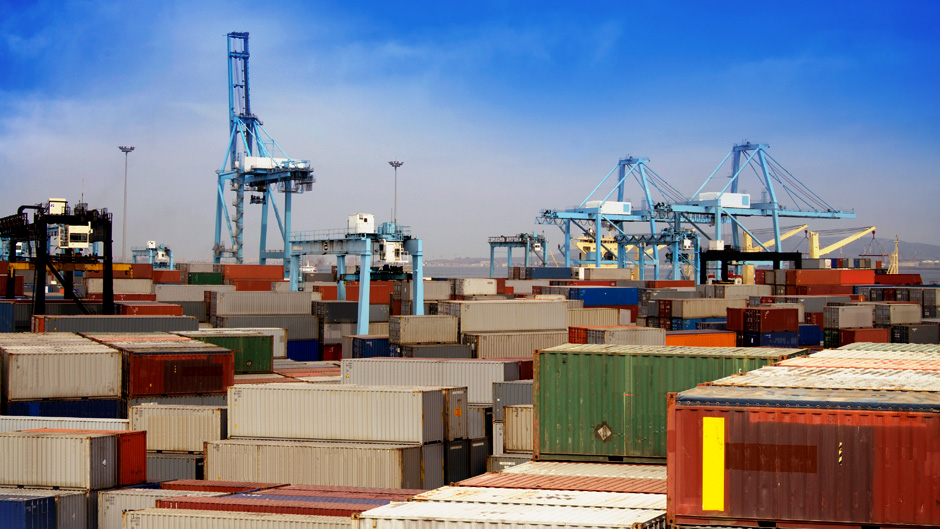
Publication
Compliance Quarterly Türkiye
In this issue of Compliance Quarterly Türkiye, we continue to inform you of global and local compliance rules and regulations impacting Turkish businesses.


Publication | September 2016
The August 31, 2016 insolvency filing of Hanjin Shipping Co. ("Hanjin"), with $6 billion in liabilities, may signal further distress from cargo shipping overcapacity or the coming consolidation of the industry, or both. Hanjin filed for rehabilitation and the appointment of a receiver in the Seoul District Court in South Korea, but the South Korean government's effective abandonment of Hanjin, suggests Hanjin is more likely the subject of a disguised orderly liquidation. No attempt was made by state-run Korean Development Bank ("KDB"), Hanjin's primary lender, to merge Hanjin with its only South Korean competitor, Hyundai Merchant Marine Co. ("HMM"). To the contrary, KDB promised to actively support any purchase by HMM of some of Hanjin's assets. To protect the status quo during the process, the South Korean court issued a comprehensive injunction blocking creditors from arresting or seizing Hanjin assets and preventing Hanjin from disposing of its assets or paying its debts. That injunction, however, has territorial limits, and to date, five Hanjin vessels have been arrested and 59 are waiting in the open sea as ports and the Suez canal have rejected the vessels.
On September 2 Hanjin filed for protection in Newark, New Jersey under Chapter 15 of the US Bankruptcy Code, which the US bankruptcy court provisionally granted on September 9. Chapter 15 provides ancillary relief in the US for pending insolvency proceedings outside the US. The provisional relieve allows Hanjin to (i) obtain an automatic stay of actions against it and its property in the US, and (ii) enlist the assistance of the US Court's in dealing with US creditors of the foreign debtor. The provisional relief came with a condition – that Hanjin agree to a cargo protocol to enable the delivery of cargo on Hanjin vessels to such cargo's beneficial owners. This is important because the stay prevents the seizure of Hanjin vessels in the US. It does not, however, prevent the seizure of Hanjin vessels outside of US territories. Hanjin has the option of seeking broader injunctive relief, but that relief is not automatic and would likely encounter resistance. Moreover, such relief would not be extraterritorial.
To obtain extraterritorial relief, Hanjin likely will file similar ancillary proceedings in at least some of the other countries in which it does business. Hanjin filed ancillary proceedings in Japan and the United Kingdom, for example, and has received injunctive relief similar to that received in Singapore and the U.S. Hanjin has applied for relief in Germany, Spain, Italy, and the Netherlands, and is anticipated to apply for relief in UAE, Australia, India, Canada, Belgium, Mexico, Vietnam, Chile and Bangladesh. Other ancillary proceedings may also be filed. Staying creditor seizures solves the problem of immediate depletion of assets, but will not create the liquidity Hanjin needs to solve its debilitating logistics problems. Ports refuse to accept Hanjin vessels for fear of clogging the berth because Hanjin can't pay to unload cargo (and because of fear of vessel seizure). Cargo owners can't track desired shipments because Hanjin vessels have to stay at sea. Vessel owners can't redeploy vessels because Hanjin cargo clogs the system. US retailers, worried about having goods in time for the most lucrative months of the year, have sought the assistance of the US Government to intervene and provide assistance. Hopefully, the cargo protocol approved by the US Court will serve as a model for similar protocols in other jurisdictions and, along with some liquidity, allow Hanjin to unclog the logjam in its delivery system.
To address the liquidity problem, the chairman of Hanjin Group, which controls Korean Air Line ("KAL"), has lent $40 billion won ($37 million) to Hanjin. KAL and the South Korean government have been respectively debating lending another $60 billion won ($55 million) and $100 billion won ($92 million) to Hanjin. Some of that lending (collateralized by Hanjin's port-terminal assets) has allowed the Hanjin Greece, the Hanjin Boston and Hanjin Gdynia to start unloading cargo in Long Beach, California, and Hanjin's lawyers claim that Hanjin has the funding and legal authority to unload more vessels in US ports, but is awaiting authorization by the South Korean court of another $50 million in financing. The Korean judge has already authorized $10 million to pay tug operators, port and cargo handlers to unload four U.S. bound vessels, but those groups are wary. Attempts to arrest and prevent Hanjin's vessels, both owned and chartered, from leaving U.S. jurisdiction to allow maritime lien creditors, like fuel suppliers, to assert U.S. maritime liens have been thwarted by the U.S. Bankruptcy Judge John Sherwood, notwithstanding creditor arguments that the bankruptcy court's injunction effectively denies such creditors any relief under U.S. law.
But disruption and confusion still rules the seas. Shipping rates have jumped 40-50%, but industry prognosticators suggest the jump is only a temporary breather for an industry that has 30% more capacity than cargo to fill it. The industry is in survival mode, many cargo shippers having lost money over a majority of the last five years. Voluntary consolidation or more failures are likely on the way. Neither Hanjin nor its South Korean court has provided any guidance on the form that a proposed restructuring might take. Under the circumstances, a restructuring appears unlikely.
Hanjin's situation remains fluid. Hanjin's insolvency will likely play out different ways in different jurisdictions, making narrow prognostications about Hanjin's future unreliable, and Hanjin's solutions complex. Creditors would be well advised to consider the world-wide implications of any strategy that might be implemented with respect to Hanjin's "rehabilitation." Creditors should seek immediate guidance to protect their positions and maximize their recoveries.

Publication
In this issue of Compliance Quarterly Türkiye, we continue to inform you of global and local compliance rules and regulations impacting Turkish businesses.
Publication
The Pensions Ombudsman has rolled out some significant changes to its decision-making process following a root and branch review of its operating model. The result should be faster decisions, with ill-conceived complaints turned away much earlier in the process. However it will also impact trustees’ and employers’ processes too. The Ombudsman is expecting greater proactivity to settle complaints, and faster responses when an investigation starts.

Publication
In this article we explore four of the key issues and trends affecting organisations globally from a work health and safety perspective, both now and in the future: global WHS regulation; the rise of technology; changing workforce populations and structures; and psychosocial hazards and risks.
Subscribe and stay up to date with the latest legal news, information and events . . .
© Norton Rose Fulbright LLP 2025